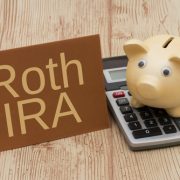What Kind of Real Estate Can a Self-Directed IRA Investor Put in a Retirement Portfolio?
When using a Self-Directed IRA, retirement investors can easily put investment real estate into their retirement portfolio. That means that investors will have access to more than simply stocks or bonds when they try to fund their retirement. But what kinds of real estate investments specifically will fit into a retirement portfolio, and which types of investments will not fit within the rules? Let us take a look at some of the more specific uses of real estate within a retirement account, and what investors can do to give themselves access to this kind of investment.
The Types of Real Estate Investors Can Use Within a Self-Directed IRA
There is a broad range of real estate options available to retirement investors who use a Self-Directed IRA. Here is just a sample of the potential avenues for investment:
- Raw land
- Apartment buildings
- Condominiums
- Joint ventures
- Residential, single family homes
- Commercial real estate
This is just a sampling, of course. It does not cover the full range of potential real estate investments that may be available to you. But it is important to note that for many people, this encompasses a full range of potential real estate investments they might make. For example, many real estate investors work solely with single family homes, while others might work solely with apartment buildings.
Does it sound like a lot? Remember that non-recourse financing is available with a Self-Directed IRA. In non-recourse financing, you will be able to use debt, but the lender will not be able to come after personal assets in the event of a default on the loan. This makes it possible to secure financing for real estate and make an investment with a Self-Directed IRA.
Are There Rules that Prohibit Certain Real Estate Investments?
The IRS is interested in the types of investments retirement investors make if those same investors turn around and use a real estate investment for personal use. This is known as a “prohibited transaction.” For example, an investor would not be able to purchase a condominium with a Self-Directed IRA and then live in that condominium. That means the investor would be using the condo as personal property, which violates the rules of real estate investing within a retirement portfolio.
The U.S. government makes it possible to keep certain retirement assets protected from the usual taxation that they would undergo in a personal account—but only if those assets are properly separated from personal assets.
The rule of thumb is to avoid “prohibited transactions,” or retirement investing transactions with a disqualified person. A disqualified person can have a broad definition. It can include someone like a spouse or a family member. For example, if you purchased an apartment building and then rented out an apartment to a family member, that would be transacting with a “disqualified person.” You can do this with personal or professional holdings, but within a retirement account, the rules change.
Is Real Estate Good for a Retirement Portfolio?
Real estate tends to act as a “hedge” against inflation. After all, if the price of living rises, then the prices of rent tend to go up with it. That means that investors who hold retirement assets tend to have a “hedge” against economic turmoil that extends beyond the reach of investments like bonds and the stock market. For this reason, many retirement investors turn to real estate for holding onto their wealth—as well as making well-timed investments that may serve to grow their investments aggressively over time.
Interested in learning more about Self-Directed IRAs? Contact American IRA, LLC at 866-7500-IRA (472) for a free consultation. Download our free guides or visit us online at www.AmericanIRA.com.









